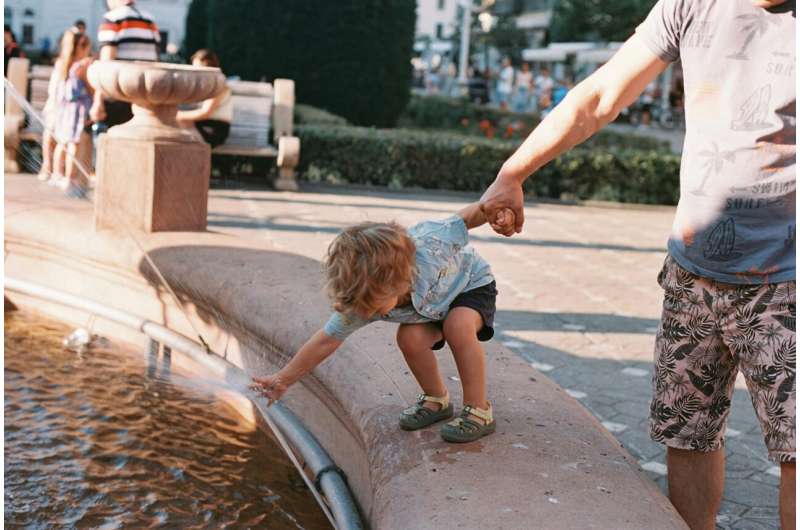Have you ever watched children at play and noticed how their imaginations can turn the simplest spaces into grand adventures? This heartwarming exploration takes us through a study contrasting playgrounds in Auckland, New Zealand, and the vibrant streets of Venice, Italy. By examining these different environments, we unveil how the settings influence children’s creativity and sense of community.

Our recent study dives into how children utilize urban spaces, spotlighting Auckland and Venice. A surprising conclusion surfaced: while meticulously designed playgrounds may offer safety, they can inadvertently stifle a child’s natural creativity and mobility. On the other hand, flexible and open spaces foster exploration and connection.
In Auckland, locations like Taumata Reserve showcase modern playground designs adorned with slides, swings, and grassy areas. Parents appreciate these spaces for their safety and shade, viewing them as secure retreats away from bustling traffic.
However, our observations revealed that rather than serving as vibrant community hubs, these playgrounds often isolate children from the flow of urban life. The playful activities seem scripted, limiting the organic mobility and diverse experiences kids crave.
In stark contrast, Venice’s enchanting Santa Croce neighborhood offers car-free streets where life unfolds. Here, we witnessed children engaging in spontaneous activities—drawing on pavements, playing ball, and chasing each other amidst the charming piazzas. These areas function as intergenerational gathering spots brimming with energy.
To quantify this playfulness, we assessed the variety of activities kids engaged in. Auckland’s Taumata Reserve registered a creativity score of merely 1.46, while Venice soared to 2.33 with over 2,600 spontaneous actions, reflecting a lively, child-led culture of play.
Why This Matters
Playing is not merely a pastime; it’s essential for children’s growth and adaptation in our ever-changing world.
In modern Western societies, play is recognized for its numerous benefits, from fostering resilience to developing social skills. In Auckland, however, the focus on safety can inadvertently restrict the chance for children to engage in rich, formative experiences.
Research indicates a decline in children’s mobility linked to car-centric lifestyles and adult patterns, which stifles their ability to explore and form connections with their environment. One father’s experience with his daughters navigating parks vibrantly illustrates this: it’s crucial for kids to learn how to manage risks competently.
Venice stands as a cultural beacon, showcasing how pedestrian-friendly designs allow children to roam, climb, and invent games. Such freedom nurtures sound judgment, adaptability, and agency while enabling them to be co-creators of urban life.
Through our study, we explore the concept of “temporary appropriation“, where children utilize spaces in spontaneous and creative ways. We also advocate for a design framework called SPIRAL, which draws on individual experiences and cultural backgrounds to enhance urban planning.
In Auckland, rules and fences restrict these spontaneous interactions, whereas Venice’s human-scaled design promotes them. By cultivating spaces that encourage risk-taking, both children and caregivers reinforce community ties through mutual care. Auckland’s fragmented parks limit socializations, distancing children from the essential risk-taking experiences needed for development.
From a New Zealand viewpoint, the significance of cultural belonging, particularly from a Māori perspective, is vital. Concepts like whakapapa (genealogy), whenua (land), and whanaungatanga (relationships) emphasize deep-rooted, inter-generational connections. In this light, play is more than recreation; it’s a cultural manifestation allowing children to engage with their identity and environment.
Lessons for Other Cities
Our research prompts us to reconsider how urban spaces can better nurture children’s well-being and independence:
- Designing public spaces with elements of “risky art“, loose parts, and creative equipment, promoting open-ended play while ensuring safety.
- Reducing vehicular traffic and enforcing lower speeds for enhanced experiences for children.
- Reclaiming streets to allow everyone to enjoy positive adventures.
- Fostering policies for car-free zones near community hotspots like schools and parks, cultivating a collective responsibility towards safety and cohesion.
- Involving children actively in urban design and embracing their perspectives through the UN Convention on the Rights of the Child.
- Promoting collaborative design workshops to tap into children’s insights when creating spaces.
- Considering emotional indicators like curiosity, joy, and belonging alongside traditional metrics.
- Engaging in continuous environmental modifications to adapt over time.
We dream of cities where children can wander freely, inventing and cultivating authentic connections. Venice exemplifies how shared spaces empower children to contribute to city life meaningfully.
Safe playgrounds can be the starting point, but to create thriving, vibrant urban environments, we must ensure children have the autonomy to shape their communities. Let’s collaborate to foster cities where children don’t just play but embark on positive adventures filled with exploration and joy.
The decisions we make today are pivotal. Together, we can choose to celebrate life’s adventures, embracing a spirit of care, well-being, and community stewardship.
This article is republished from The Conversation under a Creative Commons license. Read the original article.![]()
If you would like to see similar science posts like this, click here & share this article with your friends!

